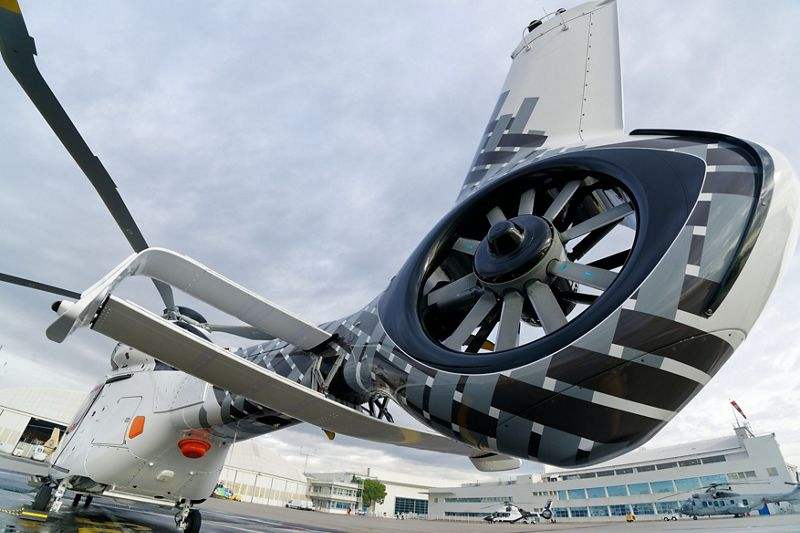Airbus Helicopters' emblematic shrouded tail rotor design made its first flight, on a Gazelle prototype, on 12th April 1968.
The first Fenestron, invented by Frenchmen Paul Fabre and René Mouille, took to the skies on the second prototype of the Gazelle on 12th April 1968. The system subsequently became emblematic of Sud Aviation, Aerospatiale, Eurocopter and now Airbus helicopters, and the H160 will carry this sound-reducing, safety-enhancing technology into the next generation of rotorcraft.
The shrouded tail rotor was initially developed to provide additional safeguards for workers on the ground but also to protect the tail rotor in forward flight and in complicated operational environments, such as working around high-voltage power lines. Sound-reduction benefits followed after much research and optimisation from one generation of the Fenestron to the next.
Originally called the “Fenestrou”, which is Provençal for “little window”, the term later evolved into Fenestron. It was first certified on the Gazelle in 1972 and then subsequently integrated into the first single-engine Dauphin prototype, whose first flight was in June 1972.
Trials were then conducted with a seven-tonne Puma in 1975, however, with a diameter of 1m60 and a total of 11 tail rotor blades, it required too much power for the Fenestron to bring an operational advantage on this class of helicopters.
The second generation came at the end of the 1970s with an all-composite Fenestron, which increased the diameter by 20%, to 1m10. This improvement was motivated by the U.S. Coast Guards’ requirement for a highly manoeuvrable aircraft for Search and Rescue operations.
In the meantime, research continued to optimise the shape of the Fenestron blade foils, and to improve sound reduction, especially during certain phases of flight. Between 1987 and 1991 the enhanced version was successfully tested on an Ecureuil, the prototype of which is still on display at the entrance to Airbus Helicopters’ headquarters in Marignane.
In 1994, the 3rd generation was fitted onto the H135, with optimised sound levels thanks to an uneven setting of the blades. In 1999 the H130 performed its maiden flight with a Fenestron derived from this version. The H145 followed suit in 2010.
50 years on, the H160 possesses the latest and largest Fenestron to be built on an Airbus helicopter, with a diameter of 1m20. The fact that it is canted to 12° allows for improved performance with an additional payload and increased stability especially at low speed.

